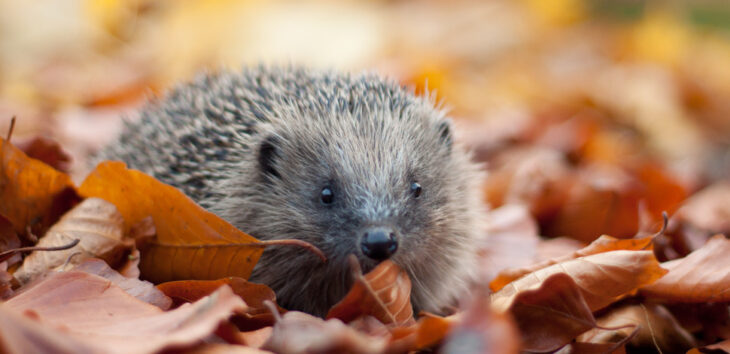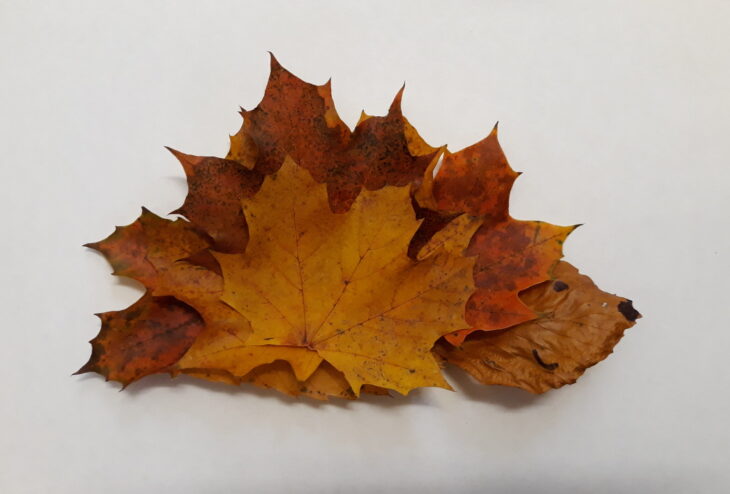During the autumn, hedgehogs are busy eating so that they can reach a healthy weight to see them safely through the winter hibernation. One of our best loved mammals, hedgehogs are in severe decline and need our help. What better way to start learning about them, than to make one?

Hedgehogs can have up to around 5,000 spines, and autumn leaves are a brilliant collage material to show these – especially pointy ones like sycamore and maple! Beech leaves are also good because they are brown and crinkly. You could experiment with different prickly materials too, like holly leaves or horse chestnut shells!

If you love hedgehogs, you can learn more about them in our Take a Closer Look at Hedgehogs YouTube video.
What you will need:
- A piece of paper
- Fallen leaves (sycamore, maple, and beech leaves work well)
- Glue or sticky tape
- A black pen
How to make an autumn hedgehog:
- Collect your natural materials from the ground, making sure to leave plenty behind for wildlife.
- When you’re ready to make your hedgehog, remove the stalks from the sycamore and maple leaves. Do this gently so you don’t rip the leaves!.
- Arrange the spiky leaves on the paper – for the hedgehogs spines. Once you are happy with the first layer, stick them down.
- Arrange another layer of leaves on top, overlapping the others to give the effect of lots of spines. When you’re happy, stick these down.
- Use a beech leaf, or another oval shaped leaf, for the hedgehog’s head. Stick this in place.
- Use a long oval shaped leaf, for the hedgehog’s belly – stick this in place.
- Draw a nose, smile, eye and ear onto the hedgehog’s head, using a black pen. A permanent marker work’s well.
- Your autumn hedgehog is ready for display!
Share your hedgehog photos using #DiscoverLearnPlay
